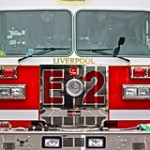The Argument for European, North American Unification
By Christopher J. Naum, SFPE on Oct 29, 2011 with Comments 0
While doing some research on UK and US Strategic Leadership and Operational issues, I came across an article published on FireChief .com on April 28, 2011 and written by By Glenn Bischoff titled: The Argument for European, North American Unification. After reading through the piece, I thought this had some interesting connotations worthy of reposting on CommandSafety.com.
 The information contained in the article points out the highlights from John Chubb, a battalion chief for the Dublin Fire Brigade, who spoke on the topic at the 2011 Fire Department Instructors Conference (FDIC) held in Indianapolis. Take some time to read the excerpt here and follow the link for the complete article on FireChief.com HERE. I’m certain there can be some interesting dialog that can evolve from it.
The information contained in the article points out the highlights from John Chubb, a battalion chief for the Dublin Fire Brigade, who spoke on the topic at the 2011 Fire Department Instructors Conference (FDIC) held in Indianapolis. Take some time to read the excerpt here and follow the link for the complete article on FireChief.com HERE. I’m certain there can be some interesting dialog that can evolve from it.
Both the European and North American fire services would benefit greatly from a unified approach to firefighting for a very simple and straightforward reason: the former is well-schooled in the theories of fire dynamics, while the latter is expert on fireground tactics. So said John Chubb, a battalion chief for the Dublin Fire Brigade, who spoke on the topic last month at the Fire Department Instructors Conference (FDIC) held in Indianapolis.
Indeed, many sound North American tactics — such as technical rescue, hazmat response, positive pressure ventilation, tactical ventilation and forcible entry techniques, particularly the use of the Halligan tool — largely are being ignored by European fire departments, according to Chubb. “There is a level of ignorance towards the way in which North American departments operate, and even a level of arrogance,” Chubb said. “People in Europe feel that we have superior firefighting technology and a superior [knowledge of] firefighting science in the average firefighter. But I would suggest that such a belief is very close-minded.”
Chubb added that such beliefs are fueled by misconceptions about the number of line-of-duty deaths in North America, particularly in the United States, which at first glance are considerably higher than they are in Europe. “When you drill down into the American statistics, however, you find that they are taken from a much broader spectrum of deaths than the European statistics, particularly the United Kingdom,” he said.
“In other words, if you went home from work [in the U.S.] and 12 hours later you had a cardiac event, that would be associated with your job. That wouldn’t happen in the U.K.”
Chubb cited a couple of examples during the session where an application of North American tactics might have saved lives. In one, a fire started on the 14th floor of an apartment building in the U.K., when a tea light that had been left burning on top of a television set in a bedroom had burned through its container. One of the occupants awoke to the smell of smoke and raced to the kitchen to get a towel, thinking that he could somehow smother the fire. Unfortunately, he couldn’t get back to the bedroom where he had left his girlfriend because the smoke and heat was too oppressive. By this time, he also couldn’t find his way to the front door of the apartment, so he opened a window to call for help. Passerby placed the emergency call.
Two pumpers arrived to the incident about three minutes after the call was received, Chubb said. What they found when they arrived was a building that had no sprinkler system. It did have a hydrant/standpipe, but that was padlocked because of previous vandalism. Unfortunately, neither of the pumpers was equipped with a bolt cutter. Two firefighters raced to the 14th floor and kicked in the door of the apartment. When they were told that the girlfriend still was inside the unit, they decided to perform a rescue — despite having no water.
- For the complete article on Firechief.com, HERE
- Published on FireChief .com on April 28, 2011 and written by By Glenn Bischoff: The Argument for European, North American Unification, all rights reserved.
Filed Under: Featured • In Quarters
























